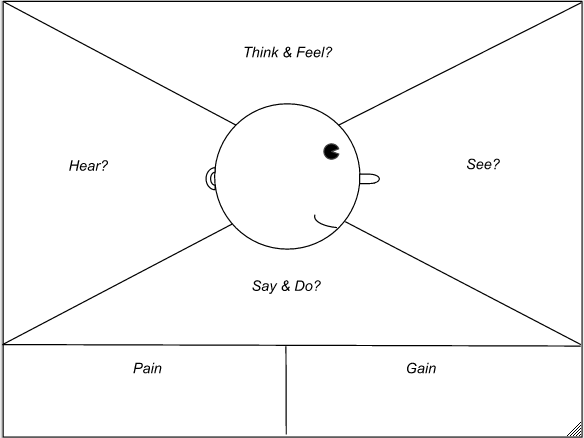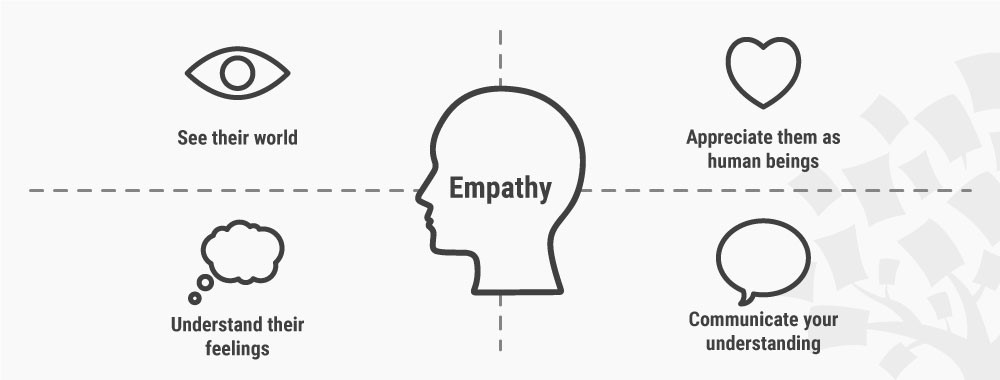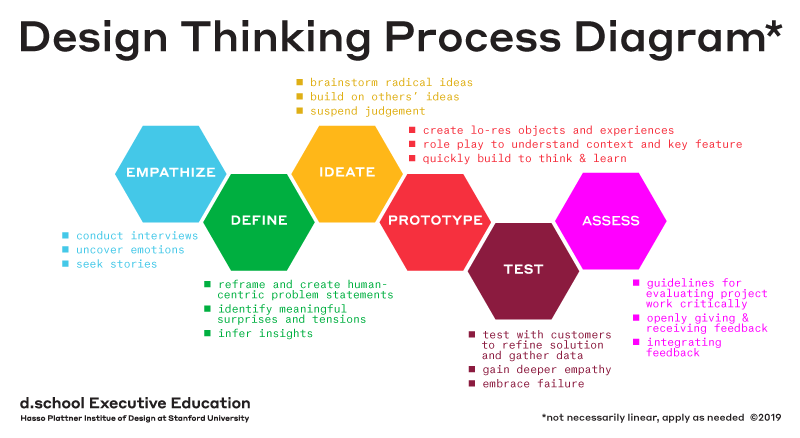Solutions are designed for people
Empathy is the capacity to understand or feel what another person is experiencing. This is how Wikipedia describes empathy.
What is empathy for me and how does it linking to IT?
Whatever I am building, I am building with the user in mind. Why does a person come to me? Why does he need me? How to make his life and work easier. How to identify true needs behind customer words?
By being an IT guy I do enjoy working with PC. I can enjoy how nice icons are constructed or how many RAM’s it has. However, not forgetting working with people and for people.
Empathy and Design Thinking
Empathize is considered the starting point for any design project.
Design thinking begins with developing a deep understanding of your users and the problem you are trying to solve for them. Only by creating empathy for your users, you can design truly breathtaking solutions for their problems.
Get to know your target users through user research, market research, or stakeholder interviews. The empathize phase is for designers to spend time getting to know the user and understanding their needs, wants, and objectives.
Types of empathy
There are three types of empathy:
- Reflective empathy—With this type of empathy, you respond to others’ emotions and motivations.
- Emotional empathy—This form of empathy enables you to know and act on what others feel.
- Cognitive empathy—This is the ability to take the perspective of another person and accurately imagine that person’s experience.
It is the skill of cognitive empathy that you need to master to understand users’ needs.
How to build empathy with your user?
To master the quality of empathy, you must do the following:
- Develop the virtue of patience—so you can listen for the user’s point of view.
- Ideally, observe users in their natural environment.
- Adopt a novice mindset when interacting with the user.
- Let go of your initial assumptions and beliefs when observing users so you can perceive their actions with a novice mindset.
- If doing user research is not possible, visualize yourself in the users’ environment or facing the same situations they face.
- Resonate with your users’ subjective world.
- Refrain from judging users.
- Do not urge to think of a fix for a problem during research. Concentrate only on empathic listening until you’ve completed your research.
Empathizing with your users, lets you put aside your assumptions and gain unanticipated insights.
Empathy map
An empathy map is a collaborative tool team can use to gain a deeper insight into their customers. It was originally created by Dave Gray and has been gaining popularity with the agile community.

Below you will find questions to be answered during customer interview and observation sessions.
What is the customer (persona) thinking and feeling?
- What is the customer concerned about or afraid of?
- Is the customer satisfied? Why or why not?
- What are his priorities, dreams, and aspirations?
- What causes an emotional reaction for the customer?
What is the customer hearing?
- What or who influences the customer?
- Is your customer easy to influence?
- Where does the customer get their information?
- What information channel does your customer use the most?
What is the customer seeing?
- Does your customer spend more time in the public or in private?
- What does your customer’s environment look like?
- How does the customer interact with their environment?
What is the customer saying and doing?
- How does the customer portray themselves in front of others?
- Words he uses when talking?
- Information withhold or leave out when sharing with others?
- What is the gap between what they say and how they act?
What are the customer’s pains?
- What obstacles does the customer need to overcome?
- Why hasn’t the customer been able to reach their goals?
- What frustrations are on the horizon for the customer?
What does the customer gain?
- What methods does the customer use to achieve success?
- How a success measured and what does it look like?
- What are the short and long term goals of the customer?
A mind map is an excellent tool complimenting your journey to successful problem-solving.


